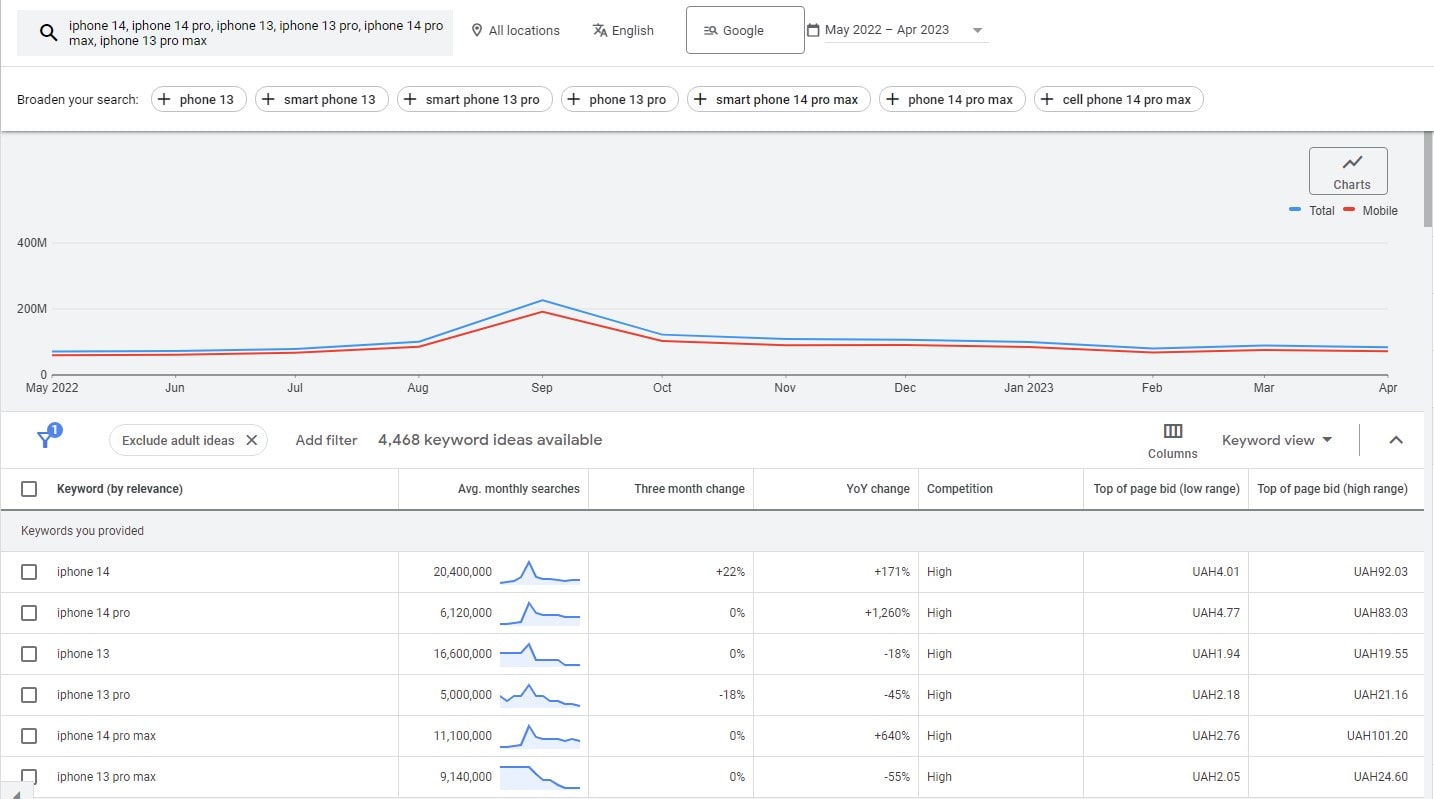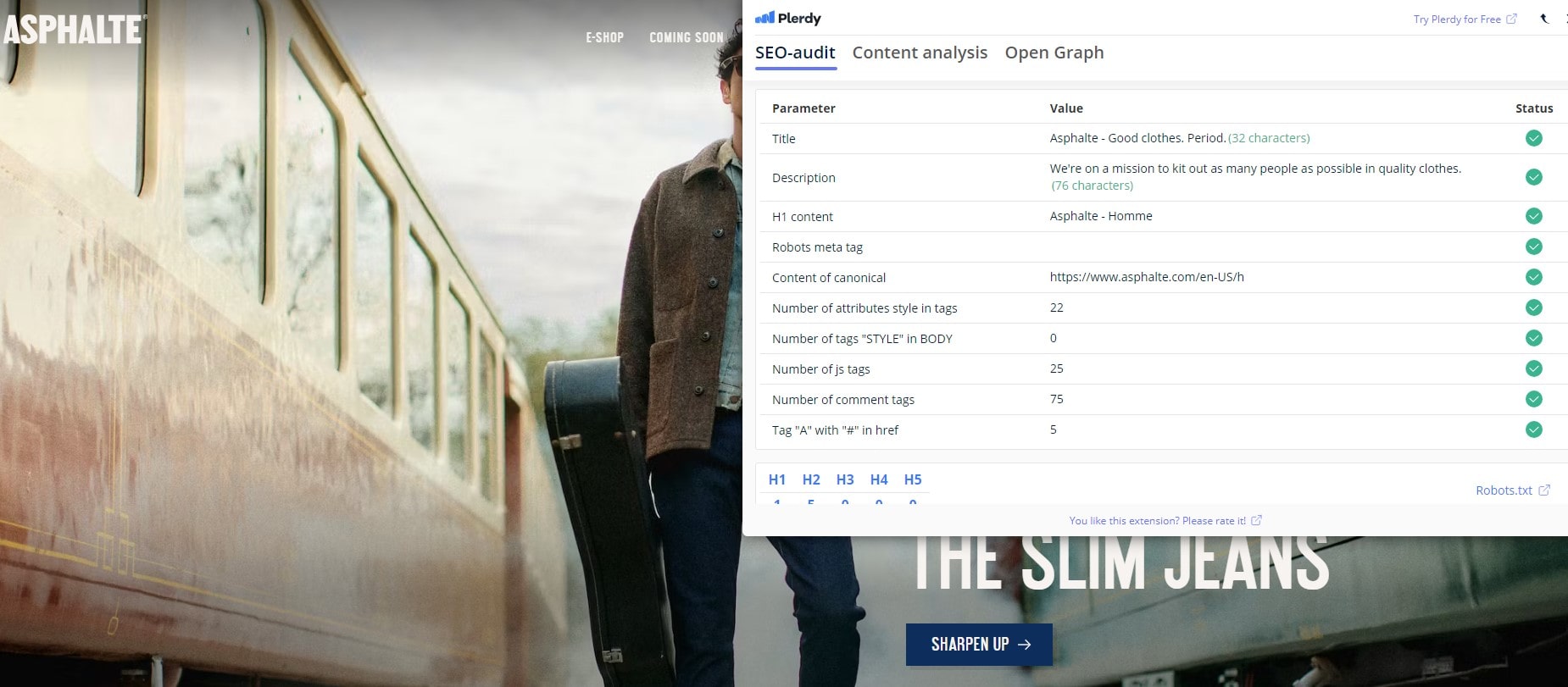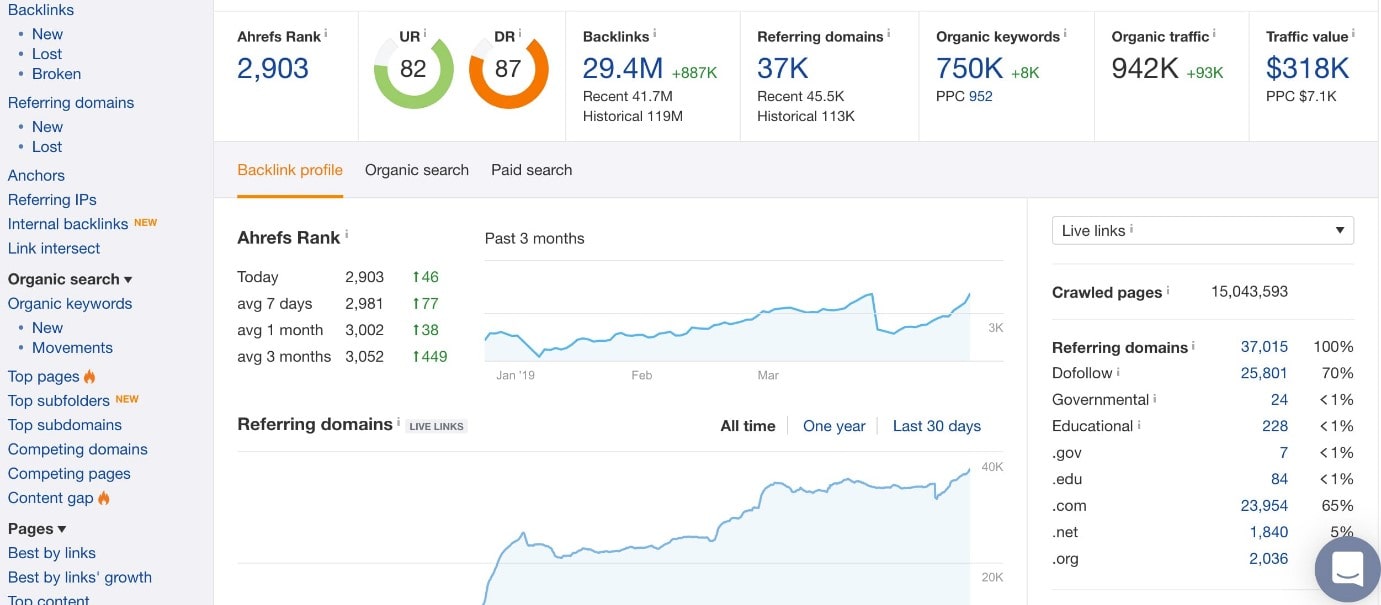In the bustling world of online commerce, Shopify stands tall – but without savvy SEO strategies, even the most impressive storefronts can get lost in the digital shuffle. Navigating the Shopify SEO maze requires more than just a map; it demands a compass equipped with the latest search optimization techniques.
This complete guide is your key to Shopify SEO success. We’ll dive deep into the essential steps to enhance your Shopify store’s visibility in search engine results. Here’s what you’ll learn:
- Crafting keyword-rich content that resonates with both search engines and customers.
- Optimizing your Shopify store’s structure for maximum search engine friendliness.
- Leveraging Shopify-specific SEO tools to outshine your competition.
Remember, effective SEO isn’t just about climbing search rankings; it’s about staying there. By applying these targeted strategies, your Shopify store can enjoy a consistent, prominent spot in search results, leading to increased traffic and, crucially, conversions.

To take your Shopify SEO game to the next level, consider incorporating tools like Plerdy. Plerdy’s analytics can significantly boost your site’s conversion rates, improve usability, and offer invaluable insights for A/B testing. In a nutshell, it’s about turning data into dollars.
Embark on your Shopify SEO journey today and transform your store into a search-engine favorite. Let’s get your products the spotlight they deserve!
Understanding the Importance of SEO for E-commerce
In the digital marketplace, SEO emerges as a driving force, especially for e-commerce platforms like Shopify. SEO is key to attracting people to your Shopify business. It’s a strategy that turns searches into sales, and pages into profits.
Key aspects of SEO for e-commerce include:
- Boosting Page Visibility: SEO rockets your Shopify page up the search engine rankings, making your products the first thing customers see.
- Enhancing User Experience: Well-optimized Shopify pages attract visitors and streamline the purchasing experience from search to checkout.
- Targeting the Right Audience: SEO ensures your Shopify store appears in searches made by potential customers, increasing the likelihood of purchase.
SEO helps a Shopify company selling artisan coffee beans rank higher in searches like “best espresso beans” and “organic coffee”. This tailored strategy draws coffee lovers to the store’s page from the start. A Shopify boutique selling handmade jewelry uses SEO to rank high in searches for “handcrafted necklaces,” attracting customers who want what they sell.
In essence, SEO for Shopify is not just about getting your page noticed; it’s about connecting your products with the right customers through strategic search placement. It’s a crucial ingredient in the recipe for e-commerce success, transforming searches into tangible sales.
How Shopify Supports SEO

Shopify expertly caters to the SEO needs of e-commerce businesses, streamlining their journey to the top of search engine results. This platform ensures that every Shopify page is not just a storefront, but a beacon in the vast ocean of online search results.
Shopify’s SEO support includes:
- Optimized Page Structure: Shopify’s themes are designed with SEO in mind, ensuring that each page is primed for search engine success.
- Customizable SEO Elements: Shopify lets you control page titles and meta descriptions for keyword inclusion.
- Built-in Blogging Platform: Shopify’s integrated blogging platform is a powerful tool for content marketing, boosting SEO by driving traffic through relevant, keyword-rich content.
When clients search for “natural skincare solutions,” a Shopify business selling organic skincare goods can use these attributes to rank high. This exposure goes beyond search results—it’s about leading the way. A sustainable fashion business leverages Shopify’s blogging platform to create compelling content. This method draws readers into eco-friendly fashion from their initial search and converts page views into sales.
In summary, Shopify doesn’t just support SEO; it empowers it. Each page on Shopify is more than a digital storefront; it’s a finely-tuned instrument in the symphony of search engine optimization. With Shopify, you’re not just building a store; you’re constructing a search engine powerhouse.
Setting Up Your Shopify Store for SEO
Setting up your Shopify store for SEO is a pivotal move in ensuring your page stands out in the sea of search results. It’s not just about having an online presence; it’s about making your Shopify store the go-to destination for customers through strategic SEO practices.
Key steps for SEO optimization in Shopify:
- Optimizing Page Titles and Descriptions: Shopify page titles and descriptions should be brief and keyword-rich. This sharpens your store’s appeal in search results, drawing in the right audience.
- Enhancing Product Image SEO: Use high-quality images with descriptive, keyword-focused alt texts. This boosts your Shopify page’s search visibility and user engagement.
- Structured Data Implementation: Employ structured data on your Shopify page to provide clear information to search engines, enhancing product visibility and relevance in search results.
- Regular Keyword Updates: Keep your Shopify page fresh and relevant by regularly updating keywords based on search trends and customer behavior.
For instance, a Shopify company selling sustainable fashion might employ keywords like “eco-friendly apparel” or “sustainable clothing brands” to match client searches. A Shopify page selling gourmet coffee blends would profit from keywords like “artisan coffee” or “premium espresso beans” to appear in relevant searches.
In conclusion, optimizing your Shopify store for SEO requires fine-tuning every element, from titles to photos, to improve search results. It’s about turning searches into discoveries and visits into conversions.
Keyword Research for Shopify

Diving into the world of Shopify, it’s clear that SEO is the backbone of online visibility. To stand out, understanding keyword research is vital. It’s like finding the right keys to unlock the potential of your Shopify store in the vast sea of search results.
Imagine you’re running a boutique coffee shop on Shopify. Your SEO strategy must brew up the most relevant keywords. Here’s how you tackle keyword research:
- Identify Your Niche: For our coffee shop, keywords might include ‘artisan coffee beans’, ‘organic espresso’, or ‘handcrafted coffee accessories’.
- Understand Customer Intent: Are they looking to buy, learn, or just browse? Keywords like ‘buy specialty coffee online’ target ready-to-purchase customers.
- Use Tools Wisely: Shopify SEO tools can help you uncover hidden keyword gems.
Let’s break it down further with a bullet list for clarity:
- Analyze Competitors: See what keywords are driving traffic to their Shopify stores.
- Long-tail Keywords: Opt for specific phrases like ‘best fair-trade coffee beans in Brooklyn’ – they drive targeted traffic.
- Local SEO: If you have a physical presence, include local terms such as ‘coffee shop near me’ to capture local searches.
Remember, SEO isn’t just about inserting keywords into your Shopify content; it’s about weaving them seamlessly to engage and convert your audience. Your goal is to make your Shopify store not just visible but irresistible in search results.
As you infuse your Shopify SEO strategy with robust keyword research, you’re not just optimizing; you’re creating a beacon that guides customers right to your digital doorstep. So, let’s brew up some SEO success for your Shopify store! 🚀🛒
On-Page SEO Strategies for Shopify

On-Page SEO for Shopify is about fine-tuning each page to ensure your store not only appears in search results but also captivates potential customers. In a digital marketplace where visibility is key, these on-page strategies turn your Shopify store into a search-friendly, customer-attracting powerhouse.
Effective on-page SEO strategies for Shopify include:
- Optimizing Product Titles and Descriptions: Create keyword-rich product titles and descriptions. This boosts your page’s relevance in search results and draws in potential buyers.
- Using High-Quality Images with Alt Text: Enhance your Shopify page with crisp, appealing images. Don’t forget to include descriptive, keyword-focused alt text for each image, improving both SEO and user experience.
- Creating SEO-Friendly URLs: Ensure your Shopify page URLs are concise, readable, and include primary keywords. This not only helps with SEO but also enhances user navigation.
- Leveraging Internal Linking: Strengthen your Shopify SEO by linking between pages within your store. This improves site navigation and distributes page authority throughout your store.
A Shopify organic skincare company can optimize its pages using these methods. The store performs higher in organic skincare searches by using keywords like “natural face cream” in product titles and descriptions and high-quality photographs with alt text. Shopify pages selling specialty coffee blends would benefit from SEO-friendly URLs and internal linking to help coffee lovers find them.
In short, on-page SEO is not just about appeasing search engines; it’s about creating a user-centric, search-optimized Shopify page that seamlessly guides customers from their initial search to your store’s checkout.
Technical SEO for Shopify Stores
Shopify stores need technical SEO to rank effectively in search results and deliver a smooth customer experience. This behind-the-scenes aspect of SEO involves fine-tuning your Shopify store’s technical elements to meet search engine guidelines and user expectations.
Key technical SEO strategies for Shopify include:
- Ensuring Mobile Responsiveness: With most searches now on mobile, your Shopify page must be optimized for mobile devices, ensuring a smooth shopping experience.
- Improving Page Load Speed: A fast-loading Shopify page is crucial. Speed up your page to reduce bounce rates and improve user engagement.
- Implementing SSL for Security: Secure your Shopify store with SSL to safeguard customer information and improve your store’s trustworthiness in search rankings.
- Creating and Submitting a Sitemap: Help search engines navigate your Shopify store by creating and submitting a clear sitemap. This improves the crawling and indexing of your pages.
For instance, a Shopify store specializing in fitness equipment can leverage these technical SEO strategies to enhance its page’s performance. Ensuring quick load times and mobile responsiveness, the store makes it easy for customers to search and shop for gym gear. Similarly, a Shopify page offering gourmet food items benefits from SSL security, ensuring customers feel safe during their online purchase journey.
In essence, technical SEO for your Shopify store goes beyond basic optimization; it’s about creating a robust, secure, and efficient online environment that aligns seamlessly with both search engine algorithms and customer preferences.
Content Marketing and SEO

Content marketing and SEO are intertwined strategies that amplify your Shopify store’s visibility and engagement. By creating compelling, SEO-rich content, you not only enhance your store’s page ranking in search results but also provide value to your customers, making your Shopify store a go-to resource in your niche.
Effective content marketing strategies for SEO on Shopify:
- Develop Engaging Blog Content: Write engaging, keyword-rich blog posts that engage your audience. This drives traffic to your Shopify page and boosts search rankings.
- Create Keyword-Rich Product Guides: Provide detailed guides or how-tos related to your products. For a Shopify store selling fitness equipment, a guide on “Choosing the Right Home Gym Setup” can be invaluable.
- Leverage User-Generated Content: Encourage customer reviews and testimonials. This not only provides fresh, relevant content for your Shopify page but also improves trust and credibility in search results.
For example, a Shopify store specializing in eco-friendly products can create blog posts about sustainability, incorporating keywords like “sustainable living” or “eco-friendly products.” This approach not only improves the store’s search ranking but also establishes the brand as a thought leader in the eco-friendly niche. Similarly, a Shopify store focusing on gourmet foods might include recipes or cooking tips, weaving in search-friendly terms like “gourmet cooking at home” to attract food enthusiasts to their page.
In summary, combining content marketing with SEO is about crafting stories and information that captivate and educate, turning your Shopify page into a magnet for both search engines and customers.
Link Building Strategies for Shopify
Link building is a key player in the SEO playbook for any Shopify store. It’s not just about generating links; it’s about forging connections that boost your store’s page in search results. A well-executed link building strategy enhances your Shopify store’s authority and drives quality traffic.
Effective link building strategies for Shopify include:
- Engaging with Industry Influencers: Collaborate with influencers in your niche. For a Shopify store specializing in fitness apparel, partnering with fitness influencers for product features can lead to valuable backlinks.
- Leveraging Guest Blogging Opportunities: Write insightful blogs for popular websites in your sector. Include links back to your Shopify page, enhancing its search ranking and visibility.
- Creating Shareable Content: Create shareable content that engages readers. More shares lead to more backlinks, improving your page’s SEO.
- Participating in Online Communities: Be active in online forums and communities related to your niche. Share your expertise and include subtle links to your Shopify store.
For instance, a Shopify store offering eco-friendly home goods can gain significant traction by guest blogging on sustainability websites, sharing tips on eco-friendly living while linking back to their store. Similarly, a Shopify page selling artisanal coffee can engage with coffee enthusiast communities, sharing brewing tips and linking to their products.
In essence, strategic link building for your Shopify store involves creating and nurturing digital relationships. It’s about centring your store’s website in relevant conversations and using each connection to bring potential customers to your virtual doorstep.
Utilizing Social Media and SEO

Utilizing social media effectively intertwines with SEO to elevate your Shopify store’s visibility and search ranking. In today’s digital landscape, social media platforms are not just networking spaces; they are powerful tools that can boost your page’s presence in search results. You can increase Shopify store traffic by effectively combining social media and SEO.
Key ways to use social media for SEO:
- Share Engaging Content: Post audience-grabbing stuff. This increases Shopify page traffic and interaction.
- Use Keywords in Posts and Profiles: Use relevant keywords in social media postings and profiles. This aligns your social content with your Shopify SEO strategy.
- Encourage Social Sharing: Make your Shopify content easily shareable on social media platforms. Increased sharing leads to higher traffic and improved search rankings.
Shopify stores selling handmade pottery can use social media to promote their items by employing keywords like “artisan pottery” or “handcrafted ceramics”. This not only captures the attention of pottery enthusiasts on social media but also boosts the store’s visibility in search results. Similarly, a Shopify page offering organic skincare products can share tips on natural skincare, incorporating keywords to ensure their posts align with what potential customers are searching for.
In summary, harnessing the power of social media in tandem with SEO is about creating a synergy that propels your Shopify store’s page to the forefront of both social platforms and search results. It’s a strategy that turns likes and shares into visits and sales.
Monitoring and Improving Your SEO Performance

Monitoring and improving your SEO performance is an ongoing process, essential for maintaining and enhancing your Shopify store’s visibility in search results. It’s not just about setting up SEO strategies; it’s about tracking their effectiveness and making data-driven adjustments to keep your Shopify page at the forefront of search rankings.
Key methods to monitor and improve SEO on Shopify:
- Utilize Analytics Tools: Implement tools like Google Analytics to track your Shopify store’s performance. This helps you understand how visitors find and interact with your page.
- Conduct Regular SEO Audits: Regularly audit your Shopify store for SEO efficiency. Page load speed and keyword optimization can be improved.
- Update Content Regularly: Keep your Shopify content fresh and relevant. Regular updates show search engines your page is active and useful.
For example, a Shopify store in the home decor niche can use analytics to track which products are most often found via search, tailoring their SEO strategy to focus on popular items. Similarly, a Shopify page offering fitness equipment can conduct SEO audits to identify and optimize underperforming pages, ensuring they rank higher in relevant search results.
In essence, effective SEO monitoring and improvement for your Shopify store is about staying ahead of the curve. By continually analyzing, adapting, and refining your SEO tactics, you ensure that your page not only matches search trends but sets new benchmarks in e-commerce visibility.
Conclusion
As we wrap up this Shopify SEO guide, let’s reflect on the journey we’ve navigated. From decoding the mysteries of search engine algorithms to mastering Shopify’s unique SEO challenges, we’ve covered it all. Our goal? To catapult your Shopify store into the spotlight of search results.
SEO is not just a one-time setup; it’s an ongoing process of refinement and adaptation. As you apply the insights from this guide, remember:
- SEO is a dynamic field, constantly evolving with search engine updates. Stay agile and ready to adapt.
- Your Shopify store’s SEO needs regular audits to stay ahead of the competition.
- The power of SEO in driving organic traffic to your Shopify store cannot be overstated.
Now, as you’re set to apply these strategies, consider Plerdy – a tool that’s ideal for SEO and UX analysis. It’s a game-changer for understanding user behavior, optimizing conversion rates, and refining your Shopify store’s user experience. Here’s a quick rundown:
- Get real-time retail consumer analytics.
- Make data-driven decisions to enhance your Shopify SEO strategy.
- Identify and fix potential UX issues that might be hindering conversions.
With the tools and techniques we’ve discussed, your Shopify store is well-equipped to climb the ranks in search engine results. Keep experimenting, keep learning, and remember – the world of SEO is always evolving, and so should your strategies. Dive into your Shopify SEO adventure with confidence and watch your online store flourish!
